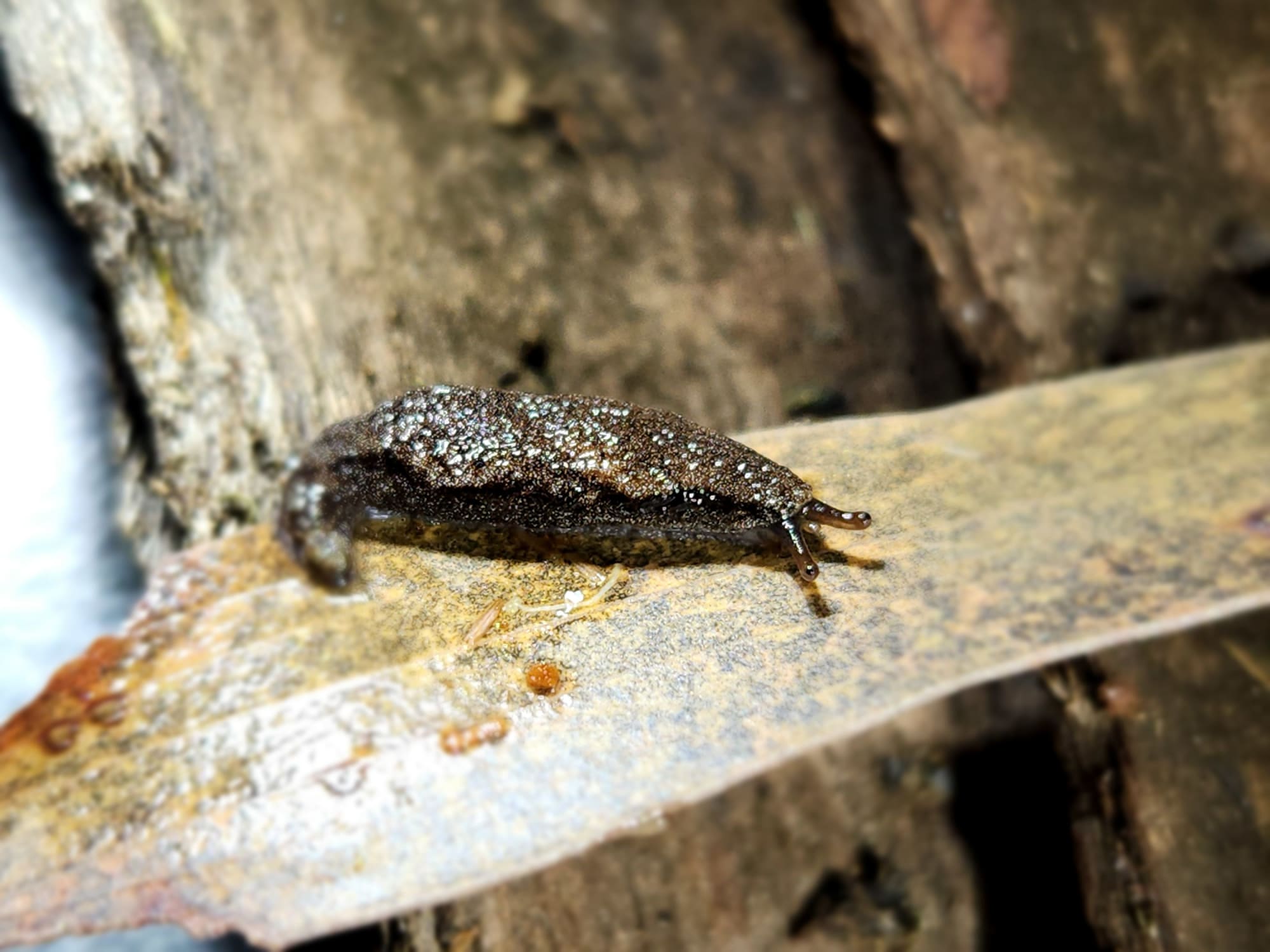
Choppers and crossing in search of snails

Petra Chambers
A teacher with a passion in getting our younger generation involved in looking after the environment, getting to know other people by learning languages, and getting outdoors.
Today the weather was superb! Blue skies and no wind meant that lots of teams of Bush Blitz scientists could travel in the helicopter to remote locations for surveys. I was allocated to a team with three scientists - Frank Koehler, Chris Reid and Zoe Bloesch. They study snails & slugs, beetles and true bugs. Our destination was a series of small limestone caves that some botanists had seen a few days ago. Snails use limestone to make their shells, so Frank was very interested to survey the cave site to see if he could collect some specimens.
Due to the remoteness of the location, we were helicoptered to Round Mountain landing at 9:30 and making arrangements to be collected again at 2pm. There was a steep downhill hike to the Murray River where we took off our shoes and trouser legs before wading across the knee high chilly alpine water to the other side. We were now in NSW territory! On this side there was no path and Frank used the GPS to navigate us through the bush up another steep climb to the top of a ridge. Along the way we turned over lots of fallen timber and rocks to look for snails and slugs as well as tapping and shaking the tree branches to catch beetles and bugs. I have very quickly realised that entomologists (insect scientists) never walk in the bush without looking for their animals. They are constantly tapping, shaking and looking... ALWAYS! Almost two hours after landing in the area we finally came to the limestone caves!
Frank spent about half an hour at the mouth of the cave where it was damp and dark. He gently lifted the vegetation growing there, also scraping away the leaf litter. He collected 6 snails, the largest of which was 4mm in diameter! I also found a native slug called Cystopelta astra (Snowy Mountains Humpback slug). Chris and Zoes' constant branch tapping and shaking also delivered rewards. They came back to base camp with 150 specimens.
I am in awe of the passion and determination of these Bush Blitz scientists. To travel in a helicopter, wade through an alpine creek, hike for two hours all with the goal to find these caves and the fauna that lives within and around them. These guys are so dedicated to their work!


